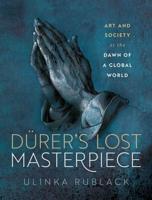Publisher's Synopsis
Leading scholars take a wider view of new media, placing it in the context of art history and acknowledging the necessity of an interdisciplinary approach in new media art studies and practice.
Digital art has become a major contemporary art form, but it has yet to achieve acceptance from mainstream cultural institutions; it is rarely collected, and seldom included in the study of art history or other academic disciplines. In MediaArtHistories, leading scholars seek to change this. They take a wider view of media art, placing it against the backdrop of art history. Their essays demonstrate that today's media art cannot be understood by technological details alone; it cannot be understood without its history, and it must be understood in proximity to other disciplines-film, cultural and media studies, computer science, philosophy, and sciences dealing with images.
Contributors trace the evolution of digital art, from thirteenth-century Islamic mechanical devices and eighteenth-century phantasmagoria, magic lanterns, and other multimedia illusions, to Marcel Duchamp's inventions and 1960s kinetic and op art. They reexamine and redefine key media art theory terms-machine, media, exhibition-and consider the blurred dividing lines between art products and consumer products and between art images and science images. Finally, MediaArtHistories offers an approach for an interdisciplinary, expanded image science, which needs the "trained eye" of art history.
Contributors
Rudlof Arnheim, Andreas Broeckmann, Ron Burnett, Edmond Couchot, Sean Cubitt, Dieter Daniels, Felice Frankel, Oliver Grau, Erkki Huhtamo, Douglas Kahn, Ryszard W. Kluszczynski, Machiko Kusahara, Timothy Lenoir, Lev Manovich, W.J.T. Mitchell, Gunalan Nadarajan, Christiane Paul, Louise Poissant, Edward A. Shanken, Barbara Maria Stafford, and Peter Weibel











